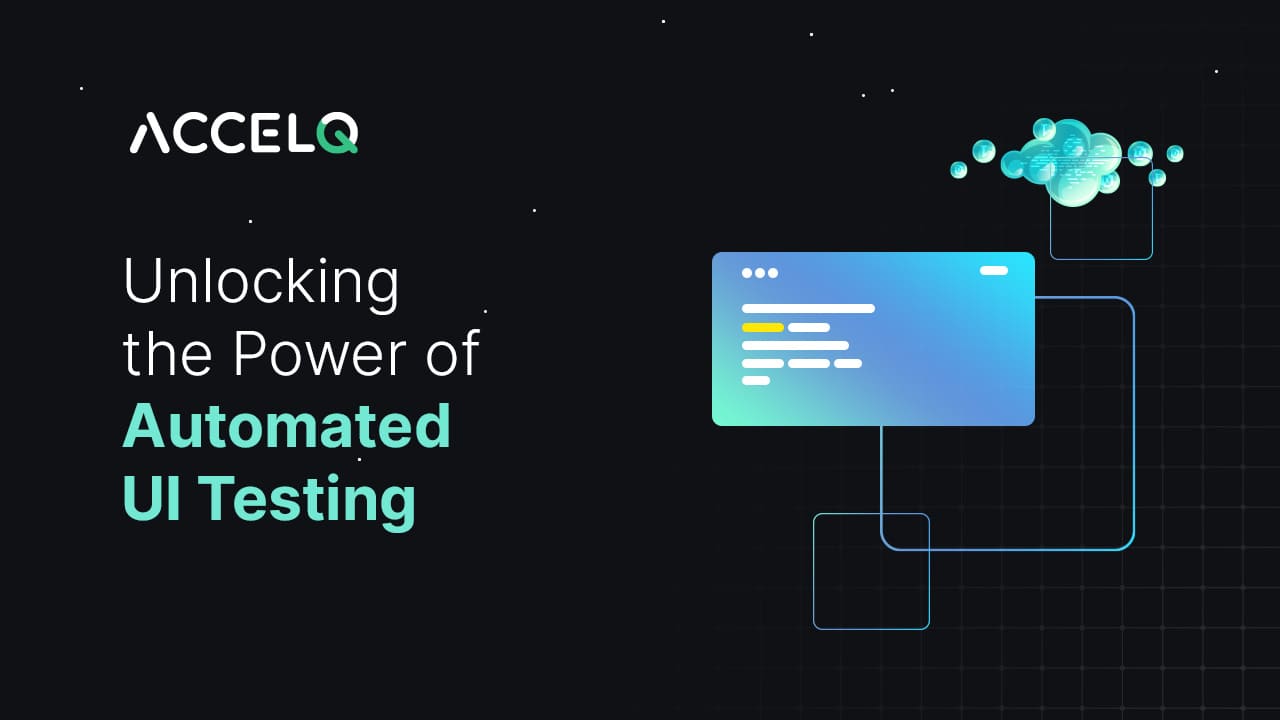Step into the Future of QA with Automated Web UI Testing

In the quest for great software experiences, a perfect user interface (UI) is now a must, not a good one. However, ensuring user interface testing perfection can be a bottleneck when tested manually, thus slowing down development cycles and leaving room for errors. That's a game changer — automated web UI testing allows teams to validate complex workflows and data processing logic with better accuracy and deliver a smoother user experience ever faster. In this blog, let us discuss how automated UI testing can raise your QA strategy and help you dominate the market!
What Is Automated UI Testing?
UI testing is all about:
- Validating navigation, input fields, and workflows
- Testing logical functionality of buttons
- Detecting inconsistencies in readability, such as font sizes and colors
- Ensuring that the front end of an application and the end-user interface are running accurately
Automated UI testing uses specific tools or frameworks to verify UI functionality. So, instead of testers making sure that all functionalities (and logic) for user interaction function appropriately, UI test automation simulates the usage of the application through its user interface. Automated UI testing is a cost-effective alternative to manual testing. It reduces tester load and also increases QA confidence.
Where Does Automated UI Testing Fit in the QA Approach?
The top of the test automation pyramid is allocated for end-to-end tests. These tests check the entire application and the bulk of the code. User interface testing and all exploratory tests are conducted at this level since these tests are more complex and exploratory and have more dependencies.
Since end-to-end tests are complex and involve numerous dependencies, they benefit significantly from automation.
Modern applications are often modular, with multiple components and infrastructure layers working together. Automated user interface testing ensures that:
- Hidden bugs and integration issues are identified
- Exploratory tests uncover unexpected UI behaviors
- Tests run efficiently across diverse environments
As the focus on user experience increases, automated UI testing allows testing teams to use strong test scripts emphasizing the user interface. Testers can easily validate UI by simulating real-world functionality and checking for integration issues and bugs.
What are the Benefits of Automated User Interface Testing?
A stable and robust automated user interface design testing process delivers significant benefits. These are:
1. Increased Testing Velocity and Coverage
Automated tools execute tests faster than manual methods, enabling:
- Execution of multiple test scenarios simultaneously
- Parallel test execution to cover diverse use cases
- Faster test cycles with minimal manual intervention
2. Enhanced Accuracy and Confidence
Manual testing is prone to human error, especially with repetitive or complex scenarios. Automation ensures:
- Consistent and accurate test execution
- Reliable results that reflect the application’s functionality
3. Scalability and Reusability
Automated test scripts can be reused across multiple versions of the application, allowing:
- Efficient adaptation to UI changes
- Scalable testing processes that meet growing demands
4. Cost Efficiency
Automation reduces long-term costs by:
- Detecting bugs early in the development cycle
- Minimizing customer support issues through improved application quality
- Testers can focus on high-value tasks
Challenges of Automated UI Testing & How to Automate UI Testing?
1. Increasing Testing Complexity
Modern UIs often feature dynamic elements such as embedded frames, interactive charts, and real-time updates. This complexity makes:
- Test maintenance challenging
- Error handling is time-intensive without robust tools
2. Diverse Test Environments
The growing variety of devices, browsers, and operating systems creates fragmented test environments. Effective automated UI testing requires:
- Expertise in handling diverse setups
- Scalable infrastructure to manage parallel testing
3. Selecting the Right Tools
With numerous tools available, choosing one that balances cost, efficiency, and compatibility can be daunting. The ideal tool should:
- Simplify test development and maintenance
- Align with business and technical requirements
- Support cross-platform testing
How does ACCELQ solve these Challenges?
Test automation powered by ACCELQ helps testing teams easily navigate the above complexities. Our AI-powered no-code test automation platform alleviates the need to write test cases. With our tool, maintaining test cases becomes effortless.
Key features include:
- Codeless Automation: Simplifies test case generation using natural language, eliminating the need for programming expertise.
- Modularity and Reusability: Encourages efficient management of test assets across application updates.
- Dynamic Element Handling: Identifies and manages iframes, embedded elements, and other dynamic controls seamlessly.
- Cross-Browser and Cross-Platform Support: Ensures reliable execution across diverse environments, including cloud and on-premise setups.
- Parallel Execution and Scheduling: Accelerates testing cycles and facilitates continuous integration.
- Error Handling and Debugging: Streamlines issue resolution with intuitive debugging tools.
ACCELQ’s platform empowers QA teams to:
- Automate the entire quality lifecycle, from test design to execution
- Achieve a 7.5x productivity increase
- Reduce testing costs by 53% with its autonomics-based automation
Conclusion
Automated UI testing is essential for delivering high-quality applications in today’s competitive market. While challenges like complexity, diversity, and tool selection persist, solutions like ACCELQ provide a robust framework to overcome them. By leveraging ACCELQ’s advanced capabilities, organizations can streamline their UI testing processes, enhance application quality, and achieve a superior ROI.
Ready to revolutionize your UI testing strategy? Connect with us to see how ACCELQ can make a difference!
Discover More
 What is End-to-End (E2E) Testing? Best Practices & Examples
What is End-to-End (E2E) Testing? Best Practices & Examples
What is End-to-End (E2E) Testing? Best Practices & Examples
 The Ultimate 2025 Guide to Blockchain in Software Testing
The Ultimate 2025 Guide to Blockchain in Software Testing
































